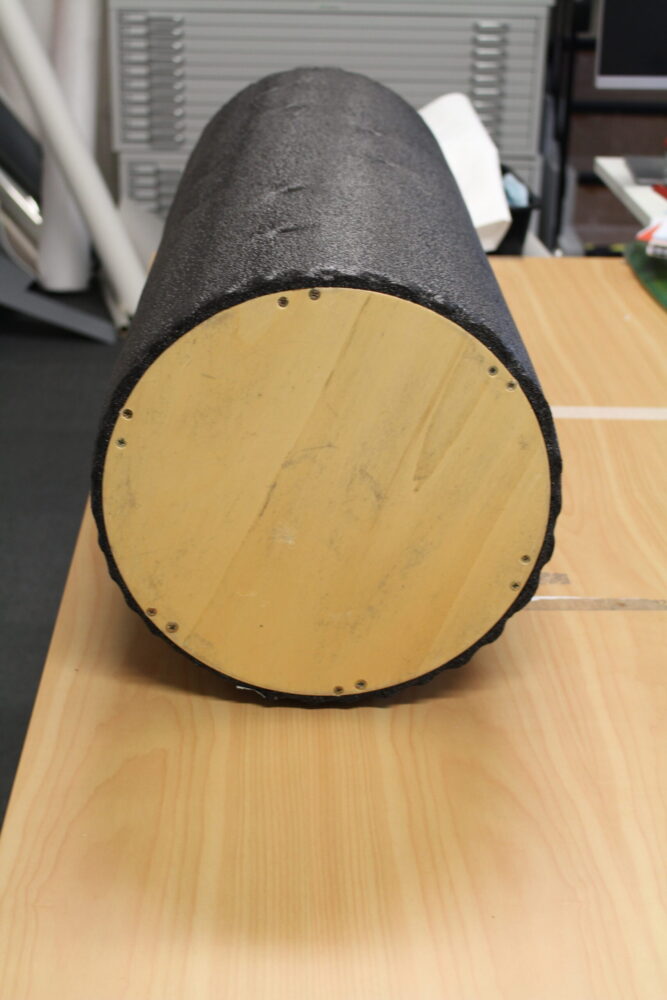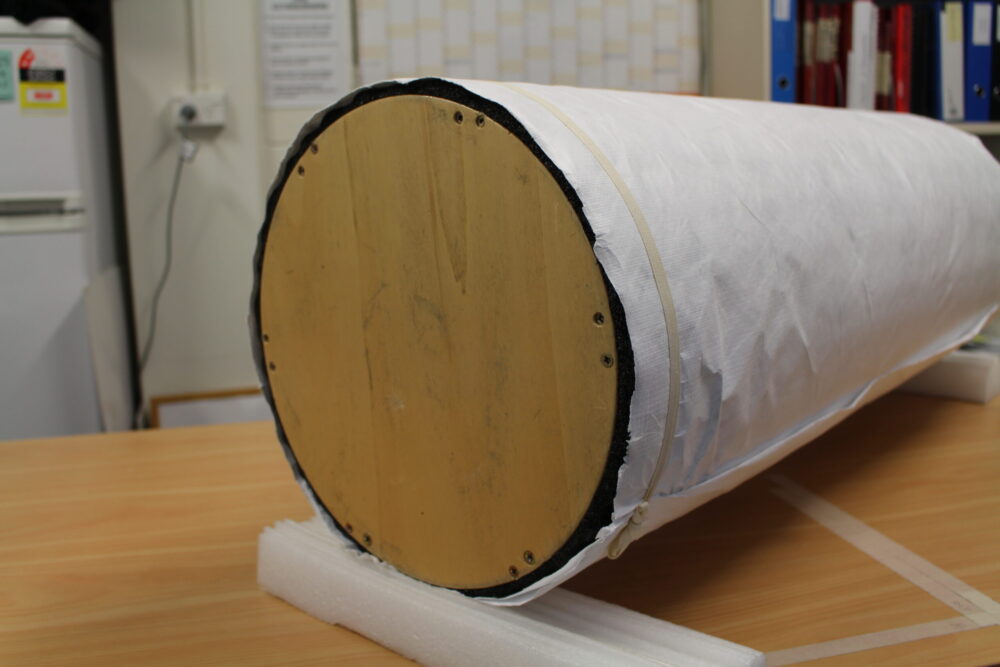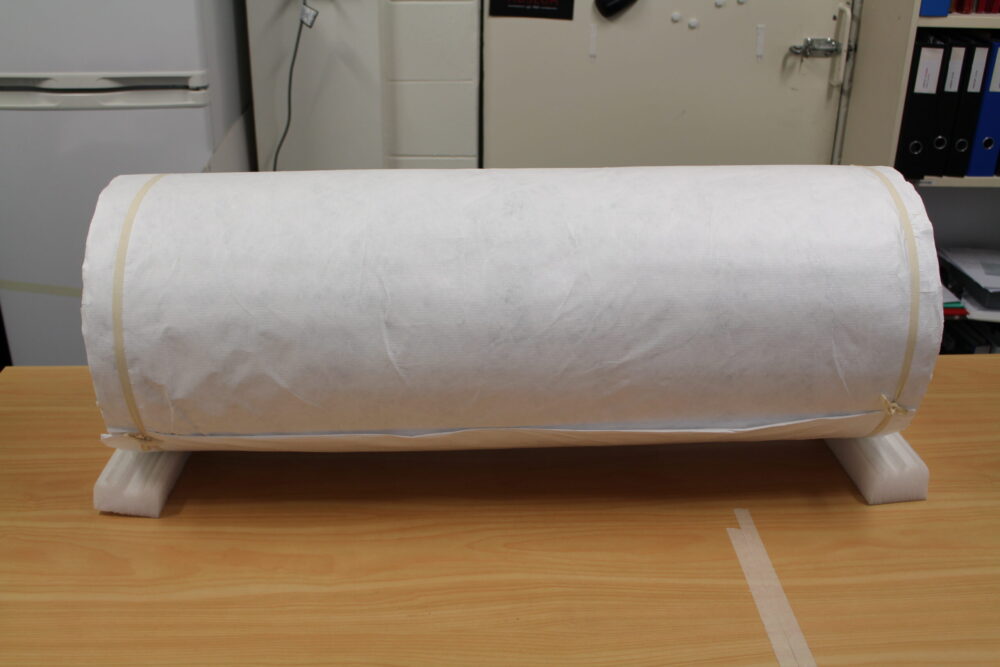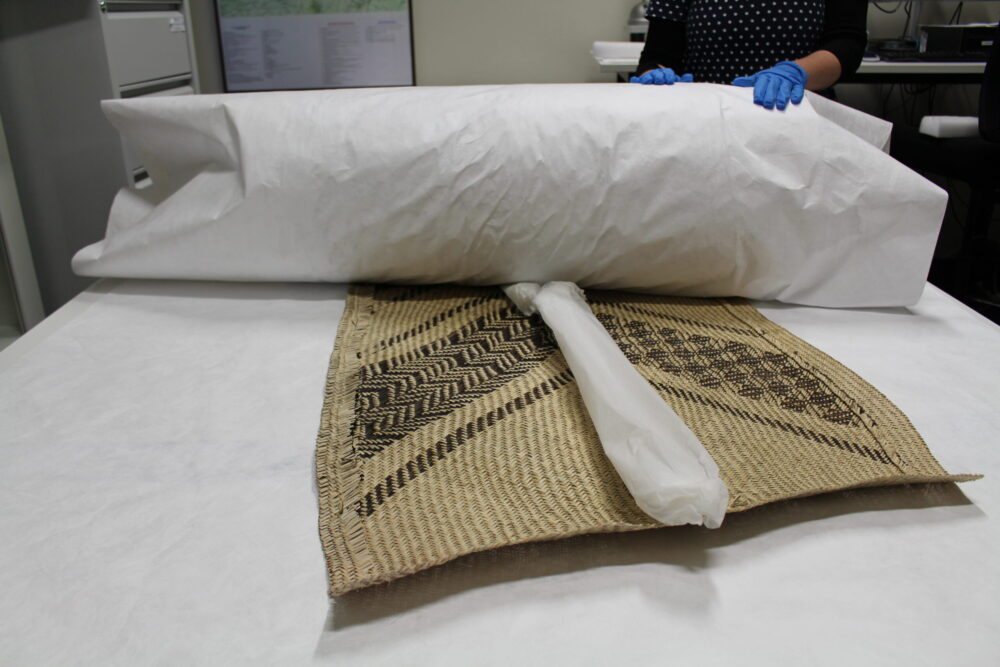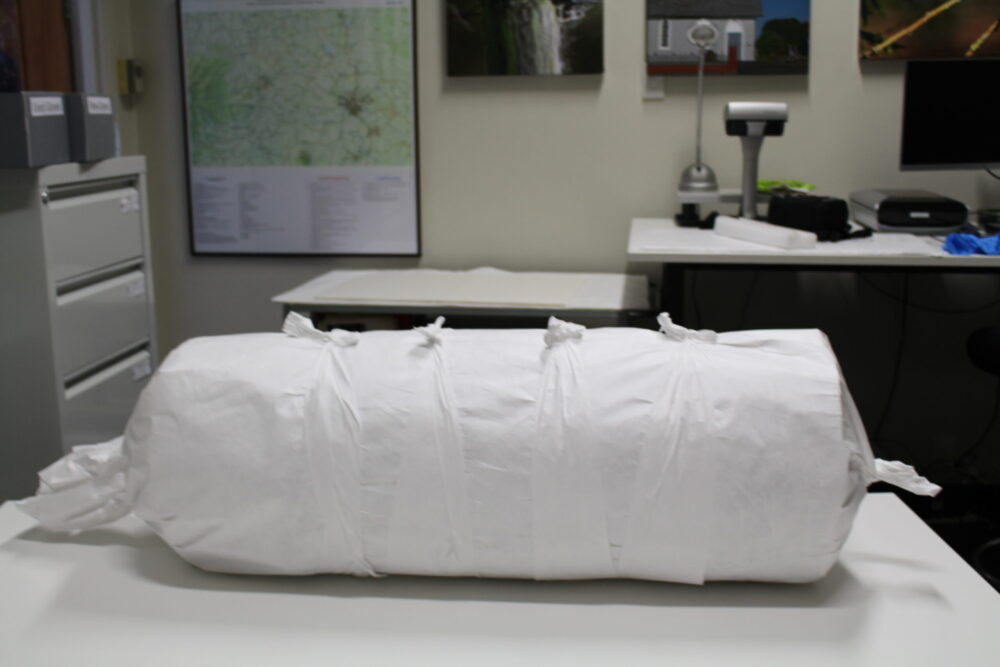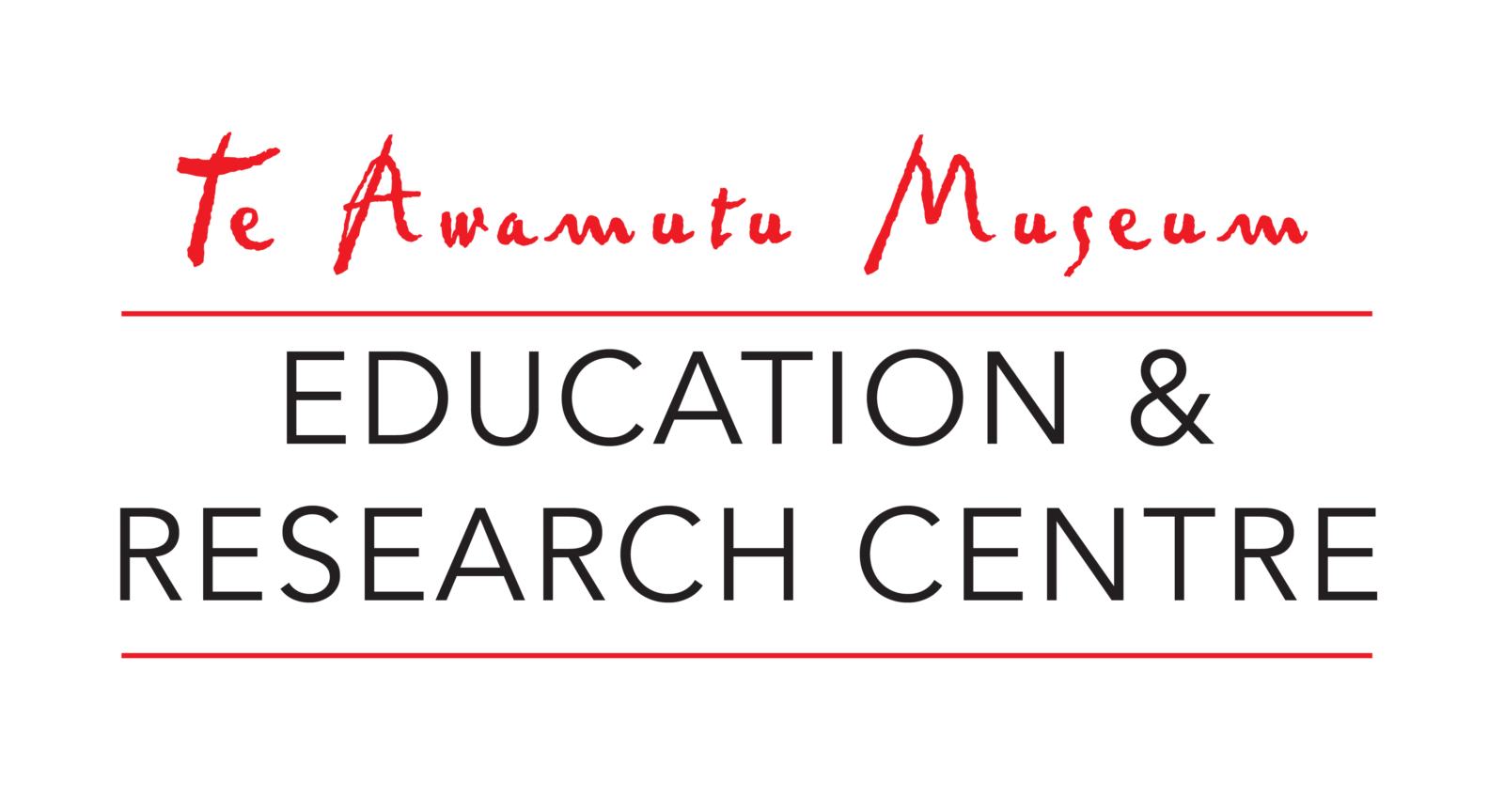Our most recent acquisition to the collection is a Whāriki from renowned weaver Kahutoi Te Kanwana, from her exhibition “Te Ohanga Ake” recently held at Te Awamutu Museum.
Typically Whāriki are housed flat or hung up, but due to our limited space it was decided the best plan was to roll, the woven kiekie was tested for its durability and suitability for this method of storage.
The first step was to create a core for the whariki to be rolled onto, and we did this by “upcycling” old Museum stools, and covering these in ethafoam to create a deep and sturdy base. The next step was to cover the core in Tyvek to create a barrier between the object and the foam core. Tyvek is used as it is a pH neutral material that offers waterproofing, mitigation from dust, breathable and suitable for most Museum objects.
After preparing the base, I used extra Tyvek to roll the Whāriki on to, meaning that every revolution of the Whāriki had a barrier layer, and minimised any friction that may occur between the fibres. The whāirki is maurua (double joined) and required extra padding along the way, ‘tissue sausages’ were added to prevent any lumps or bumps being transferred between the layers. The last touch was to add Tyvek bows to hold it all together.
Megan Denz, Collection Manager
20 SEPTEMBER 2020
